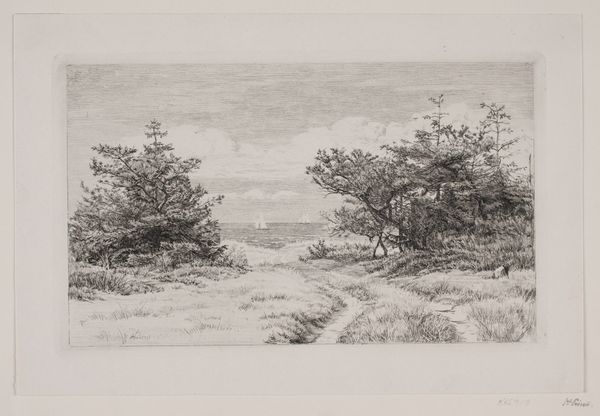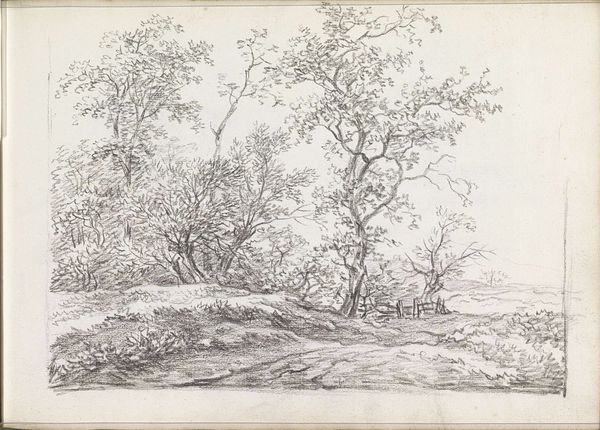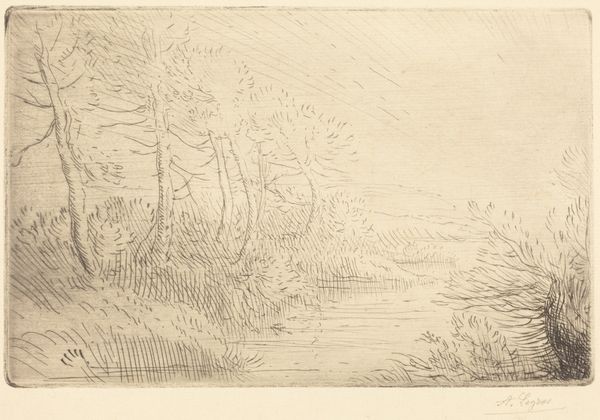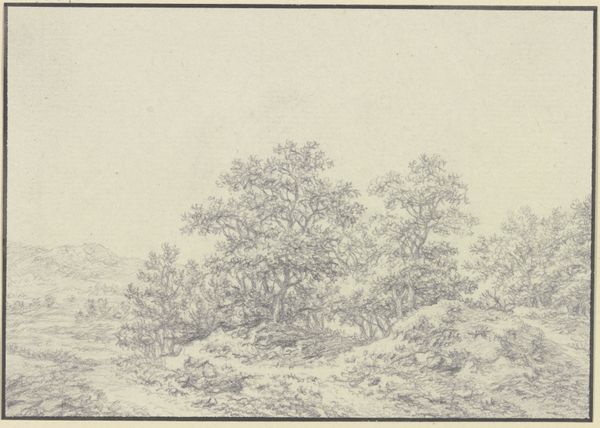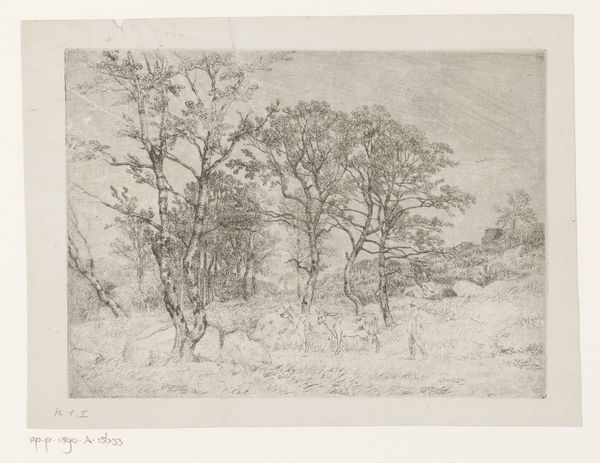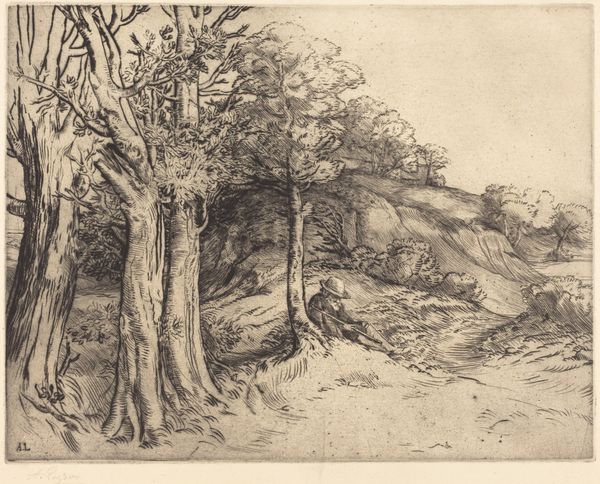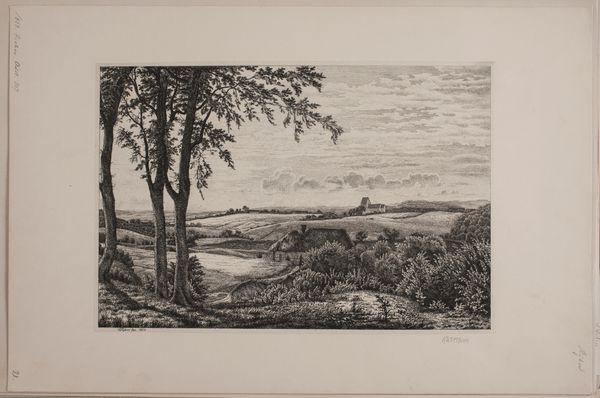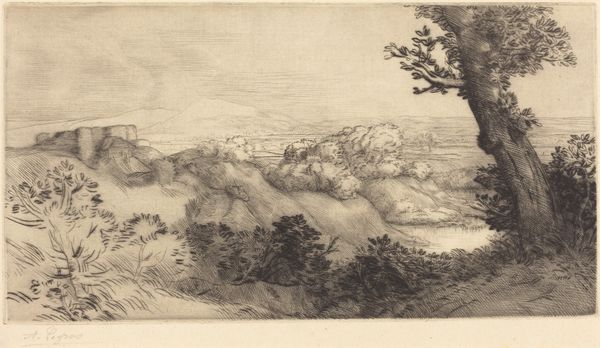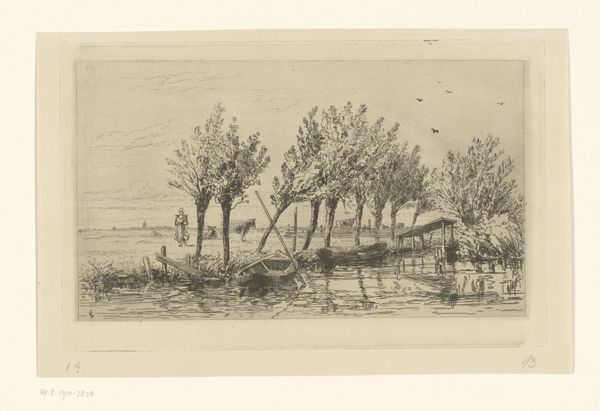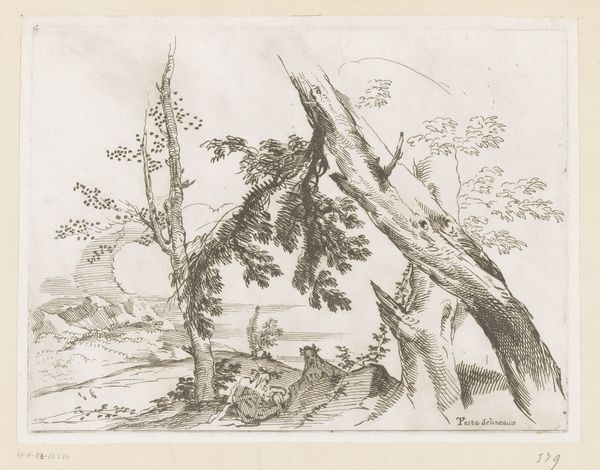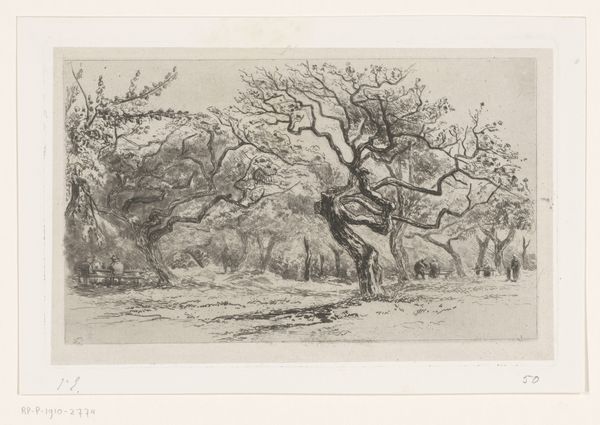
print, etching
# print
#
etching
#
landscape
#
etching
#
realism
Dimensions: 210 mm (height) x 314 mm (width) (bladmaal), 198 mm (height) x 138 mm (width) (plademaal)
Curator: Welcome. We’re standing before Carl Bloch’s "Udsigt til Havet," or "View of the Sea," an etching from 1887 currently held at the SMK. Editor: Immediately, I'm struck by the quiet stillness. It’s a whisper of a scene, rendered with such delicate lines that it almost feels like a memory fading at the edges. Curator: Exactly. The medium of etching—lines bitten into a metal plate with acid—allows for this remarkable detail. Look at how he uses the varying density of lines to create tonal depth. The making of this work itself would have involved significant labour, from preparing the plate, through incising, and printing, not a single act of creative genius, but of skilled making. Editor: I find myself following that path. It invites you to wander, to almost step into the image. The distant sails, tiny against the vast expanse, offer a poignant sense of perspective. And this isn't some idealized scene, it is all quiet labor, everyday seeing, if that makes sense. Curator: Bloch, primarily known for his history paintings, embraced printmaking as a popular art form. Etchings allowed wider audiences access to art, blurring lines between the unique artwork and something approaching a mass produced, widely shared commodity, reproduced for the rising middle classes. Editor: Thinking of wider audiences, do you think it speaks to our modern obsession with capturing perfect landscapes? Instagram, in monochrome… It seems he already grasped that allure of simplicity and fleeting beauty. It’s timeless and yet feels so utterly of its moment. Like looking at a dream I once had. Curator: Interesting point. And perhaps it's this accessibility—in terms of both the print medium itself and the quiet intimacy of the scene—that continues to resonate. What can be reproduced easily carries its own impact, shaping taste. Editor: It also hints at journeys—a pathway leading us somewhere undefined, to a faraway point or the ocean—and I wonder, does he invite you, viewer, to become an anonymous passenger? Curator: Thank you. Thinking about what we know about Bloch's production and Danish history perhaps we can learn how this etching relates to the art world, markets and audiences of its time, I certainly found it an enlightening experience! Editor: Absolutely, now if only there were actual smells associated with paintings! Salty ocean breeze would only amplify its beauty and charm for me!
Comments
No comments
Be the first to comment and join the conversation on the ultimate creative platform.
